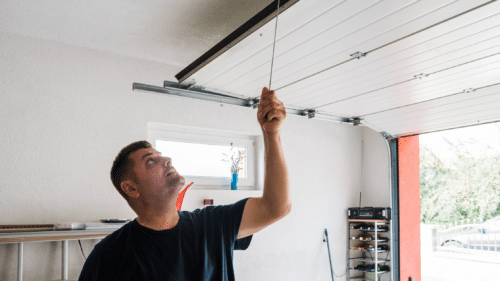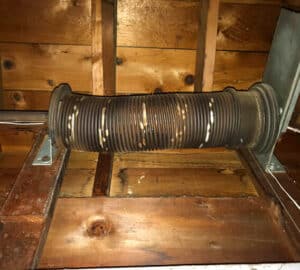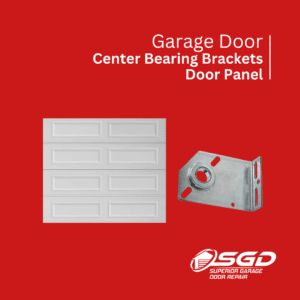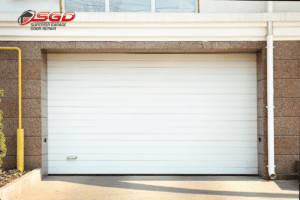When you consider the unique climate of Minnesota, maintaining Minnesota garage doors isn’t just about routine check-ups; it’s about protecting the heart of your home’s exterior. As a homeowner, understanding the significance of garage door maintenance specific to the Gopher State is essential. Whether it’s repelling the effects of frosty blizzards or the humid ripple of summer heat, your garage door demands a tailored care approach, and enlisting a reliable Minnesota garage door service could be the shield your garage door needs to remain sturdy, stylish, and functional.
Key Takeaways
- Regular maintenance ensures your garage door withstands Minnesota’s diverse weather patterns.
- Proactive care is key to preventing costly breakdowns and enhancing door longevity.
- Working with professional services fortifies safety and efficiency in maintaining Minnesota garage doors.
- Understanding local climate impacts is crucial to selecting the proper maintenance routine.
- Investing in periodic maintenance adds to the curb appeal and value of your property.
The Importance of Regular Garage Door Maintenance
Maintaining your garage door is not just about keeping it looking good; it’s about preserving its longevity, ensuring safety, and preventing costly repairs down the line. Regular preventive garage door care is essential for the smooth operation of this large moving object that’s often used daily. Neglect in this area can lead to accidents or the need for major repairs, which could be more expensive than a consistent maintenance routine.
Imagine being late for an appointment only to find your garage door jammed. Or picture the potential risk if the door fails to close properly, compromising the security of your home. These scenarios underscore the need for regular maintenance, a crucial aspect of responsible homeownership. Preventative care can help detect issues early on, such as minor wear and tear or the need for part replacements, avoiding emergency situations and the hassle that comes with them.
Below is a table with typical garage door components that require regular maintenance and potential risks associated with neglect:
| Garage Door Component | Maintenance Required | Risks of Neglect |
|---|---|---|
| Door Springs | Regular tension checks and adjustments | Risk of snap due to wear, leading to injury or property damage |
| Tracks and Rollers | Cleaning and lubrication | Off-track door potentially causing malfunction or collapse |
| Opener Mechanism | Test safety features and remote operation | Possible entrapment under a faulty door due to sensor failure |
| Cables and Hinges | Inspection for fraying and lubrication | Unexpected door movement or failure, causing security risks |
| Weatherstripping | Check for cracks and replace if needed | Drafts and water penetration, leading to property damage and increased energy bills |
To reap all the benefits of garage door longevity and upkeep, schedule regular check-ups, prioritize garage door safety, and establish a consistent routine. Think of preventive garage door care as an investment not just in the system itself, but also in the safety and security of your entire home.
Understanding Minnesota’s Climate Impact on Garage Doors
Minnesota’s dynamic weather conditions pose unique challenges for the structural integrity and functionality of your garage doors. Homeowners must acknowledge the climate impact on garage doors, as vast temperature fluctuations, combined with high humidity, can significantly degrade garage door components over time. Let’s delve into the specific effects of Minnesota’s climate on your garage door and discuss effective weatherproofing and preventative strategies to mitigate potential damage.
Effects of Cold and Moisture on Garage Door Components
The frigid Minnesota winters bring about a cold that can stiffen the lubricant in door rollers, hinges, and tracks, leading to increased resistance and wear during door operation. Moisture from snow and sleet can also seep into cracks and freeze, causing the metal parts to expand and contract—this can result in misalignment, warping, and ultimately, failure of moving parts such as springs. Moreover, the cold can make your garage door’s material brittle, particularly in older wooden doors, which could lead to cracking and breaking.
Summer Heat and UV Exposure
Conversely, summer in Minnesota isn’t free from potentially damaging conditions for your garage doors either. The high temperatures and direct UV rays can cause the door’s finish to fade and the materials, especially if it’s made of vinyl or plastic, to warp or melt. Additionally, the heat can contribute to the degradation of rubber seals and weather stripping which are crucial for keeping the garage insulated and protected from the elements.
Preventative Measures for Weather-Related Wear
To combat the detrimental effects of harsh climate conditions, it is essential to employ a comprehensive set of preventative measures. These include regularly applying a silicone-based lubricant to moving parts to keep them operating smoothly throughout the temperature extremes. Installing weatherproofing seals and insulation kits can maintain a stable internal garage environment which mitigates the weathering of door parts. Furthermore, regular inspections for rust or corrosion on metal components—and taking immediate action to address any corrosion found—are crucial steps in preserving the structural integrity and functionality of your garage door.
By understanding the specific climate-related challenges posed by Minnesota weather conditions and implementing a series of diligent weatherproofing garage doors strategies, you can ensure your garage remains a safe and reliable part of your home year-round. Vigilance and proactive care are your best defense against the unpredictable, yet impactful, Minnesota climate.
DIY Garage Door Maintenance Tips
As a homeowner, keeping your garage door functioning smoothly is crucial to your daily routine and security. With this easy-to-follow garage door maintenance guide, you can perform DIY garage door repair tasks that ensure your garage door’s durability and reliability. Before you start, remember to reference your garage door’s manual for any manufacturer-specific instructions.
- Visual Inspection: Every few months, inspect all components for signs of wear and tear. Look at the springs, cables, rollers, and hinges for any noticeable damage. If damage is detected, assess whether it’s a simple fix or if professional help is needed.
- Cleaning: A clean track is essential for smooth operation. Use a damp cloth to remove any buildup and a mild, non-corrosive cleaner for the door itself to keep it looking like new.
- Lubrication: Proper lubrication of rollers, hinges, and springs is a must for noise reduction and smooth operation. Use a silicone-based lubricant to avoid attracting dust and debris.
- Weatherstripping: Check the weather seal at the bottom of your door. If it’s cracked or brittle, replace it to maintain insulation and protection against the elements.
- Balance Test: Disconnect the automatic opener and manually open the door halfway. If the door doesn’t stay put, the springs might need adjustment. This is a task best left to professionals due to the high tension involved.
- Reverse Mechanism Test: This is a safety feature that needs regular testing. Place a piece of wood on the ground where the door would close. If the door does not reverse after contacting the obstruction, the opener must be repaired or replaced.
| Maintenance Task | Frequency | Tips |
|---|---|---|
| Visual Inspection | Bi-annual | Check during spring and fall for any visual signs of wear. |
| Cleaning | Annual | Clean tracks and door surface to prevent buildup. |
| Lubrication | Bi-annual | Use silicone-based lubricants on moving parts. |
| Weatherstripping Replacement | As needed | Replace if you see light passing through gaps under the door. |
| Balance Test | Annual | If door doesn’t remain open halfway, springs may require adjustment. |
| Reverse Mechanism Test | Monthly | Ensure your door reverses upon encountering an obstacle. |
These homeowner garage door upkeep tips are designed to be a part of your routine household maintenance. Regular attention not only prevents inconvenient breakdowns but also prolongs the life of your garage door. Nevertheless, if you come across complex issues or repairs that go beyond the basics, don’t hesitate to seek the assistance of a reputable professional.
Identifying Common Garage Door Problems in Minnesota
As a homeowner in Minnesota, you’re likely no stranger to the garage door issues that can arise due to the state’s variable weather conditions. Understanding these common garage door problems can help you identify when a simple fix is possible or when it’s time to call in the professionals for garage door repair in Minnesota. Let’s delve into the most frequent complications that might affect your garage door’s performance.
Broken Springs and How to Spot Them
One of the most critical components of your garage door are the springs, and they are also one of the most common to fail. A clear sign of a broken spring is a loud snapping sound when operating the door or the inability of the door to lift. When you encounter such issues, proceed with caution; mishandled springs can be dangerous. Usually, it’s best to seek professional assistance to address such garage door problems.
Door Opener Failures and Troubleshooting
Door opener failures can lead to frustration and security concerns. If your garage door isn’t responding to remote commands, first check the batteries and signal. If the problem persists, inspect the door’s alignment and track for any obstruction. Sometimes the fix might be as simple as realigning sensors. More complex issues, though, such as motor failures, will likely require specialist expertise in garage door repair.
Worn Rollers, Cables, and Hinges Issues
Rounding out the trio of common issues are problems with rollers, cables, and hinges. Worn rollers may cause a door to operate with a jerking motion or to stray off its track. Similarly, frayed cables and loose hinges can hamper smooth operation and potentially be hazardous. Visual inspections can often reveal if parts need tightening, lubrication, or replacement, but if there’s any uncertainty, don’t hesitate to contact a trusted service provider for garage door repair in Minnesota.
Seasonal Garage Door Maintenance Checklist
Ensuring the smooth operation of your garage door through the varied seasons in Minnesota requires adherence to a regular garage door maintenance schedule. Due to the state’s climate, seasonal upkeep for garage doors is not just recommended; it is necessary. Below is a garage door checklist tailored to each season so you can protect and maintain your investment year-round.
| Season | Maintenance Tasks |
|---|---|
| Spring |
|
| Summer |
|
| Fall |
|
| Winter |
|
By following this structured approach, you will likely ward off most issues that lead to costly repairs or replacements. Always remember to stay consistent with your garage door maintenance schedule and do not hesitate to seek professional assistance if any complex matters arise during your seasonal upkeep for garage doors. This proactive garage door checklist is designed to keep you, your property, and your loved ones safe regardless of what Minnesota’s climate might bring.
Professional Garage Door Inspection and Maintenance Services
Ensuring the safety and longevity of your garage door starts with professional inspection and maintenance services. Even though routine checks can be done personally, the complexity and potential risk factors associated with garage doors often necessitate the need for a professional touch. This section delves into how to select credible professional garage door service providers, what to anticipate during a thorough garage door inspection, and the tangible benefits that come with a scheduled garage door maintenance contract.
Choosing the Right Service Provider
It’s crucial to entrust your garage door to a service provider with not just the expertise, but also the reputation to back their work. Look for providers with certified technicians, an extensive track record of positive customer reviews, and a portfolio of previous work. Query about their experience with your specific garage door model, and confirm that they carry insurance to protect your property during service.
What to Expect During a Professional Inspection
A comprehensive garage door inspection should cover every possible fault line — from the tension in the springs to the integrity of the door panels. The professional service you choose should provide a detailed analysis of the door mechanisms, offer preventive care tips, and prioritize any urgent repair needs. Typically, this includes a sequence of checks such as examining the door balance, inspecting the rollers, cables, hinges, and verifying the safety features are in full working order.
The Benefits of a Maintenance Contract
A garage door maintenance contract is a preemptive investment into the health of your garage door system. Contracts often offer priority servicing, reduced rates, and regular check-ups that extend the life of your door. They also offer the peace of mind that a professional is keeping a close eye on potential issues before they escalate into costly repairs or replacements.
| Maintenance Service | Benefits |
|---|---|
| Regularly Scheduled Inspections | Prevents unexpected failures, extends garage door lifespan |
| Priority Customer Service | Quick response for emergency repair needs |
| Discounted Repair Costs | Cost savings on parts and labor |
| Documentation of Service History | Enhanced resale value with a well-maintained system |
Garage Door Maintenance Safety Precautions
When it comes to maintaining your garage door, safety should never be an afterthought. Each year, homeowners face accidents that could have been prevented with proper garage door safety tips and safe maintenance practices. Understanding the importance of garage door maintenance safety will help you avoid unnecessary risks. Let’s look at some crucial precautions.
- Power Off and Unplug: Before you start any maintenance work, ensure the power to your garage door opener is turned off and the unit is unplugged. This eliminates the risk of the door activating unintentionally.
- Use Proper Tools: Always use tools that are in good condition and designed for the task at hand. This ensures both your safety and the integrity of the garage door mechanisms.
- Clamp the Door in Place: If you’re working on a door that is partially open, clamp a pair of locking pliers onto the track above one of the rollers to prevent the door from dropping.
- Avoid DIY Spring Repairs: The springs on your garage door are under high tension and can cause serious injury if mishandled. Spring repairs or replacements should be left to professionals.
- Wear Appropriate Safety Gear: Safety glasses, gloves, and sturdy shoes should be worn to protect against flying debris and accidents.
- Consult the Manual: Your garage door manual contains valuable information on maintenance procedures. Review it before beginning any work to ensure you’re following the correct steps.
- Regular Inspections: Frequently inspect your garage door components for signs of wear and tear. Addressing issues early on can prevent accidents.
Understanding when to call in the experts is crucial. If you’re ever in doubt about a particular maintenance task, or if it involves complex parts like the springs or cables, it’s time to contact a professional. An expert can handle the issue safely and provide peace of mind that the job has been done correctly.
| Maintenance Task | DIY Appropriate | Professional Recommended |
|---|---|---|
| Visual Inspection | Yes | If anomalies found |
| Replacing Batteries in Remotes | Yes | No |
| Minor Track Adjustments | Some Knowledge Required | If unfamiliar |
| Lubricating Moving Parts | Yes | No, unless issues persist |
| Spring Repair or Replacement | No | Yes |
| Door Balance Test | Yes | If balance is off |
| Cable and Roller Inspection | Yes | Yes, if damage is suspected |
Must-Have Tools for Maintaining Your Garage Door
Keeping your garage door in top condition requires a set of reliable garage door maintenance tools. Whether you’re planning routine upkeep or addressing specific repair needs, having the right equipment on hand is essential. From the most basic hand tools to more specialized gear, here’s a comprehensive list to keep your garage functioning properly.
Basic Hand Tools and How to Use Them
- Adjustable Wrench: Useful for turning nuts and bolts when tightening or loosening parts.
- Socket Set: Offers various sizes for different hardware on your garage door mechanism.
- Screwdrivers (Phillips and Flathead): Needed for removing or securing components held by screws.
- Pliers: Handy for gripping and pulling, especially when dealing with cables.
Specialized Equipment for Specific Repairs
- Garage Door Torsion Spring Winding Bars: Essential for safely adjusting or replacing torsion springs.
- Circuit Tester: Helps in troubleshooting electrical issues within garage door repair equipment.
- Clamps: Used for securing door panels in place when performing repairs.
Keeping Your Tools Organized and Maintained
The key to efficient maintenance lies in keeping your tools well-organized. A sturdy tool organization for garage door repair can mean the difference between a quick fix and a time-consuming search for the right tool.
- Toolbox: Invest in a high-quality toolbox for storing and transporting smaller tools.
- Pegboard: A wall-mounted pegboard is perfect for hanging and visually organizing larger tools.
- Maintenance: Regularly clean and lubricate your tools to keep them in good working order.
Lubrication: Keeping Your Garage Door Running Smoothly
Proper maintenance is essential for the longevity and reliable operation of your garage door, and one of the key components of this is effective garage door lubrication. Neglecting this aspect can lead to noisy, slow, or even jammed garage doors, but with the right care, your door can operate smoothly and silently.
Choosing the Right Lubricant for Your Garage Door
Selecting the proper lubricant for garage doors is vital. The market is full of options, but not all are suited for garage door components. Look for lubricants specifically designed for garage doors—these are typically silicone- or lithium-based and will provide the proper coating without attracting dust and grime, which can actually worsen the performance over time.
Step-by-Step Guide to Lubricating the Door
- Before lubricating, clean all tracks with a cloth to remove any build-up of dirt and debris.
- Apply the lubricant to the rollers, and be sure to wipe away any excess to prevent drips.
- Lubricate the hinges at their pivot points, but avoid the plastic parts.
- If you have a chain-driven opener, apply lubricant to the chain. Belt-driven openers do not require this step.
- Finally, lubricate the springs to keep them operating smoothly and to protect against rust.
Exercise caution during the lubrication process to ensure your safety, as garage door components can be under high tension.
Lubrication Schedule for Optimal Performance
To keep your garage door mechanisms functioning at their best, adhering to a lubrication schedule is recommended. In general, lubricating garage door components should be done semi-annually. However, if your door is used more frequently, or if you live in an area with extreme weather conditions, you may need to lubricate the moving parts every three months.
Upgrading Garage Door Components for Better Performance
As you seek to enhance the functionality and longevity of your garage, considering garage door upgrades is pivotal. Replacing or updating certain components can lead to improved performance, safety, and even energy savings. It’s crucial to know when an upgrade is due and which performance-enhancing components are worth investing in. Understanding the cost of garage door upgrades can also help in making an informed decision about the potential return on investment (ROI).
When to Consider an Upgrade
Tailoring your garage door to your personal needs or changing circumstances often calls for an upgrade. If your garage door is consistently facing operational issues, is more than 15 years old, or your energy bills have been rising due to poor insulation, then it’s time to ponder over an upgrade. In addition, technological advancements such as smart home connectivity could encourage you to enhance your garage door system.
Key Components to Upgrade
- Door Opener: For improved safety and security, a new opener with smart controls and quiet operation can make a world of difference.
- Springs: Upgrading to high-cycle springs can extend the lifespan of your garage door mechanism, offering better durability and support.
- Insulation: Considering a higher R-value insulation for your garage door panels can aid in energy conservation, keeping your garage warmer in winter and cooler in summer.
- Weatherstripping: For dealing with the extremities of weather, top-notch weatherstripping can protect your garage interior from moisture and drafts.
Estimating the Cost and ROI of Upgrades
Assessing the cost of garage door upgrades is crucial for budgeting and calculating ROI. Here’s a breakdown of potential expenses you may encounter:
| Component | Estimated Cost | Potential ROI | Benefits |
|---|---|---|---|
| Door Opener | $150 – $400 | High (convenience/security) | Enhanced security, smart features |
| Springs | $100 – $300 | Moderate (durability) | Increased lifecycle |
| Insulation | $200 – $600 | Varies (energy savings) | Better temperature control, energy efficiency |
| Weatherstripping | $50 – $200 | Moderate (protection) | Improved weather resistance |
Note that while some upgrades offer immediate benefits in terms of performance and comfort, the financial ROI, especially that related to energy savings, generally accumulates over time. Your initial investment not only reflects on reduced maintenance costs but also on the overall reliability and functionality of your garage door system.
Conclusion
As we’ve navigated through the intricacies of garage door care, it’s clear that the key to longevity and efficiency lies in **regular garage door maintenance**. In a state like Minnesota, where the elements constantly test the fortitude of your home’s exterior, being vigilant in maintaining your garage door becomes doubly important. The insights provided have armed you with the knowledge needed to tackle preventive care, address climate challenges, and manage or prevent common issues. Summarizing garage door maintenance, it’s not just about fixing problems as they arise; it’s about consistent upkeep for peak performance year-round.
Reflecting on the key takeaways for garage door upkeep, remember that the small steps taken today can circumvent costly repairs tomorrow. Whether it’s adhering to a seasonal maintenance schedule, performing DIY inspections and lubrications, or deciding when professional services are required, your actions are crucial for safeguarding your garage door against wear and tear. With the right care, you’re not only protecting a crucial component of your home but also enhancing its safety, curb appeal, and value.
To that end, let these concluding remarks on garage door care serve as a call to action for all Minnesota homeowners. Dedicate the necessary attention and resources to your garage door’s maintenance needs. By doing so, you ensure its reliable operation and secure your investment for years to come. Remember, a well-maintained garage door contributes to a safe, functional, and aesthetically pleasing home. Seize control of your garage door’s destiny, embrace the responsibility of routine care, and enjoy the peace of mind that comes with a well-kept home.
FAQ
Why is garage door maintenance important in Minnesota?
Due to Minnesota’s unique climate, which includes harsh winters and humid summers, maintaining your garage door is essential for ensuring its functionality and longevity. Regular maintenance can prevent weather-related damage, increase safety, and enhance your home’s curb appeal.
How can the Minnesota climate affect my garage door?
Extreme cold can lead to material contraction and make moving parts less responsive, while moisture can contribute to corrosion and decay. The summer heat and UV exposure can cause fading and warping. Weatherproofing and insulation are critical to minimize these effects.
What are some preventive garage door care tips?
Preventive care includes regular inspections and cleaning, lubrication of moving parts, and timely addressing of any minor repairs. It’s also important to check weatherstripping and seals regularly and adjust or replace them as necessary.
Can I perform garage door maintenance tasks myself?
Many basic maintenance tasks, such as visual inspections, cleaning, and lubrication, can be performed by homeowners. However, always consult your garage door manual for specific instructions, and understand when to seek professional help for more complex issues.
When should I call a professional for garage door repair in Minnesota?
You should contact a professional if you encounter broken springs, malfunctioning door openers, or damaged rollers, cables, and hinges. Attempting repairs on these components can be dangerous without the proper training and tools.
What should I include in a seasonal garage door maintenance checklist?
Your checklist should cover tasks appropriate for Minnesota’s seasons, such as lubricating moving parts, checking the balance of the door, inspecting the hardware and weatherstripping, and ensuring proper operation of the safety features.
How do I choose the right professional garage door service provider?
Look for a service provider with a good reputation, proper licensing, and insurance. Check online reviews, ask for recommendations, and compare quotes. Also, ensure they have experience with the specific issues and brands of garage doors.
What safety precautions should I take when maintaining my garage door?
Always disconnect the opener before working on the door, wear proper safety equipment, and never attempt to repair or adjust high-tension components like springs and cables yourself. Be aware of the door’s weight and the possibility of it closing unexpectedly.
What tools do I need for maintaining my garage door?
Basic hand tools like a socket set, wrenches, screwdrivers, and pliers are necessary for minor adjustments and repairs. You may also need specialized equipment for certain tasks, such as a spring tensioning tool or a cable puller.
How often should I lubricate my garage door components?
Garage door components should typically be lubricated every six months or as recommended by the manufacturer. This will help maintain smooth operation and prevent wear and tear on moving parts.
Are there benefits to upgrading my garage door components?
Upgrading components such as openers, springs, or insulation can enhance performance, improve energy efficiency, and extend the service life of your garage door. Consideration of cost and potential return on investment is important when planning upgrades.








